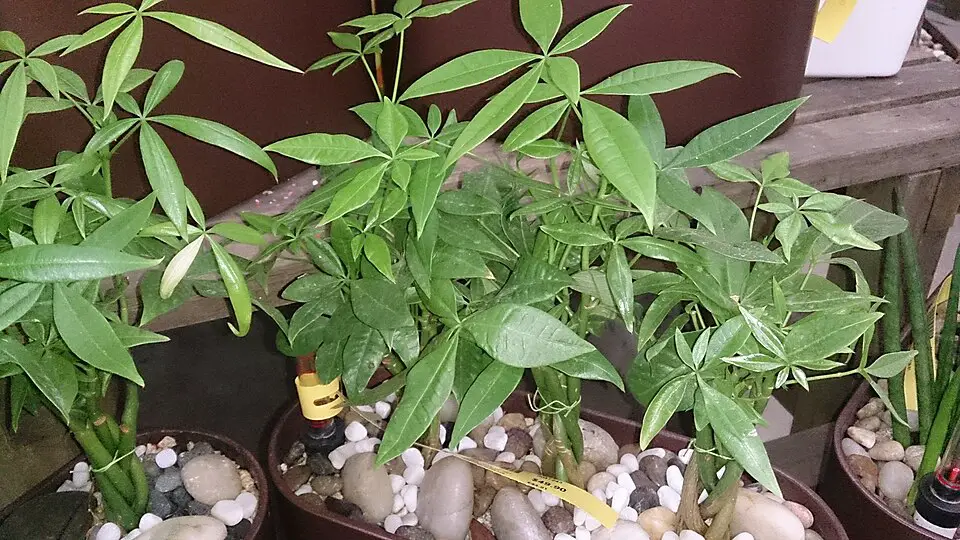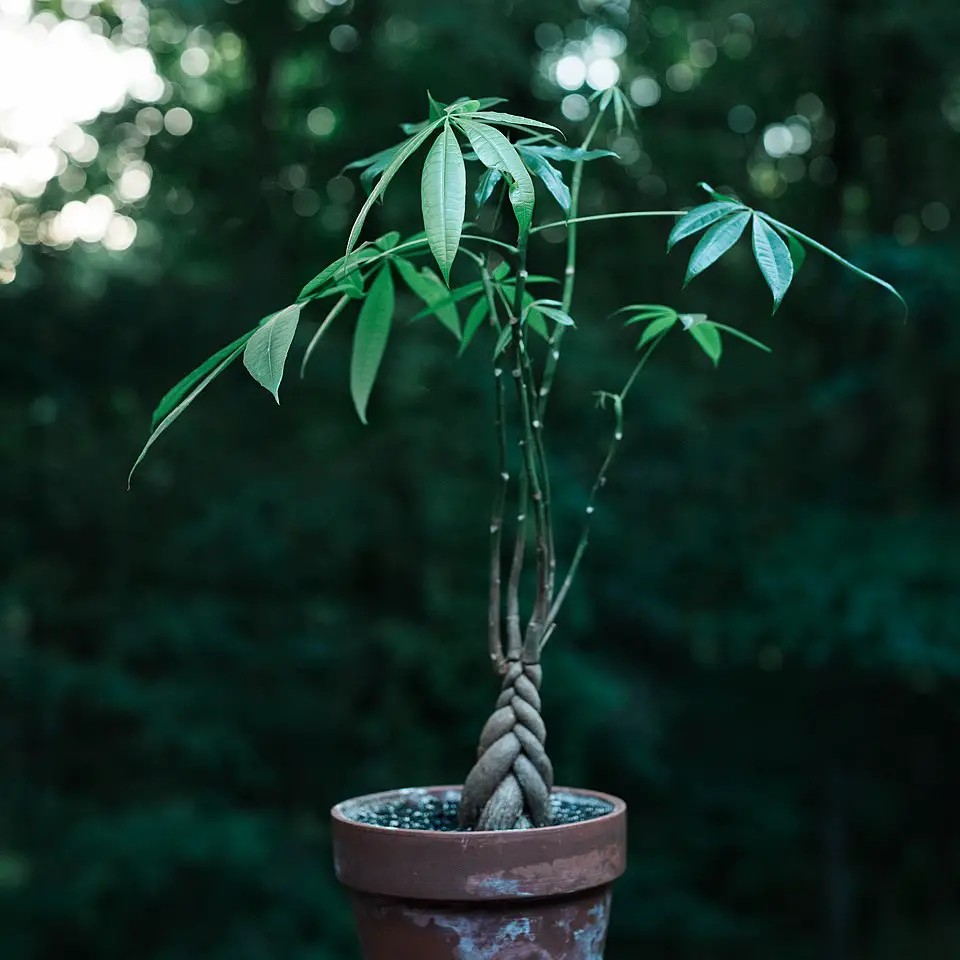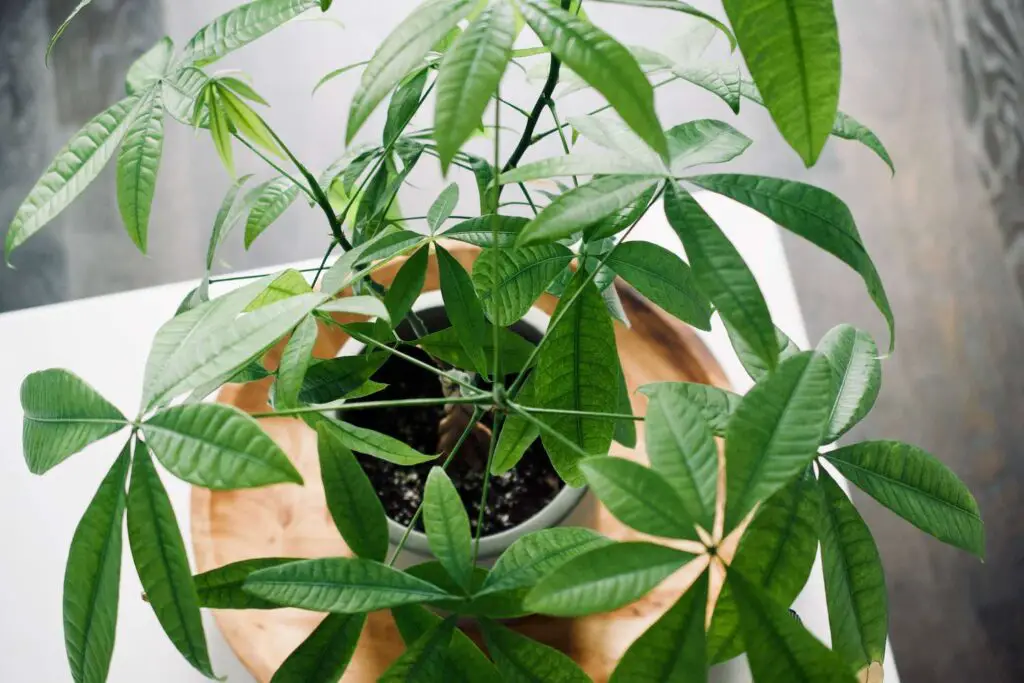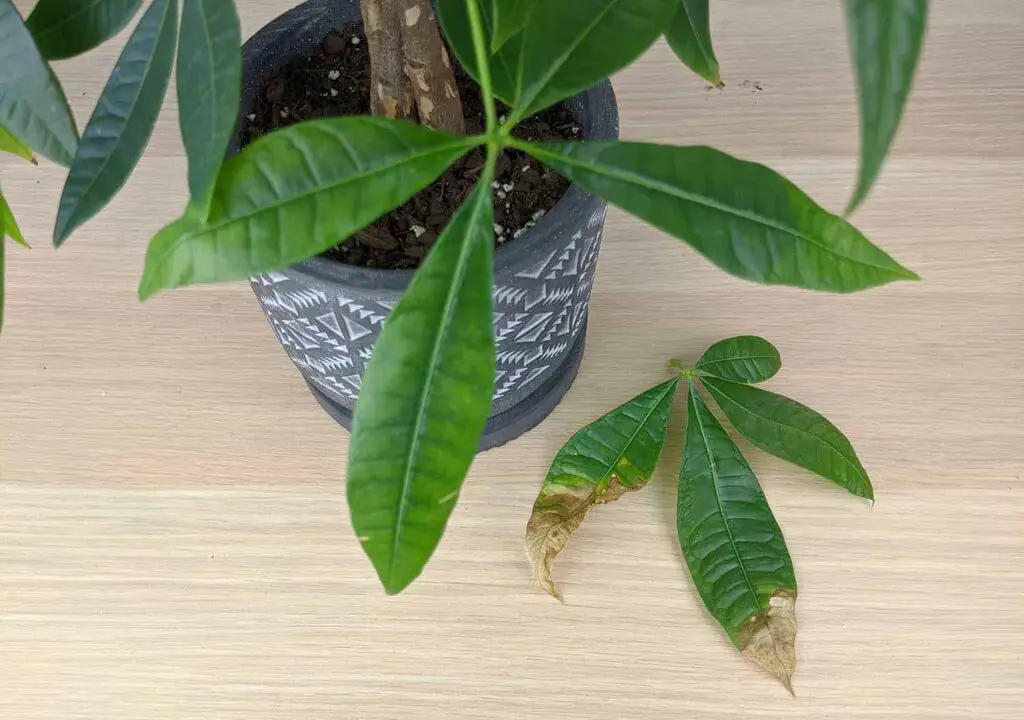The best soil for a money tree is a well-draining potting mix that retains some moisture while allowing excess water to escape. A blend of peat moss, perlite, and orchid bark offers the ideal environment for healthy root growth.
The money tree, scientifically known as Pachira aquatica, is a popular houseplant known for its unique braided trunk and lush green leaves. It is often associated with good luck and prosperity. To ensure that your money tree thrives, it is essential to provide the right soil conditions. The right soil mixture can promote healthy root growth, which is crucial for the overall health of the plant.

Money trees are native to the wetlands of Central and South America. In their natural habitat, these plants grow in nutrient-rich, loamy soil that drains well yet retains some moisture. Replicating this environment in a pot is vital for your plant’s success. Using the correct soil mix not only supports healthy roots but also helps prevent issues such as root rot and overwatering.
Understanding Soil Requirements
To understand the best soil for your money tree, it’s important to consider several factors. These factors include drainage, aeration, and moisture retention. Each of these aspects plays a role in the health of your plant’s roots.
Here are some key points to consider when selecting the right soil for your money tree:

- Drainage: Money trees prefer soil that drains well to prevent water from pooling around the roots. This helps reduce the risk of root rot.
- Aeration: Soil that allows air to circulate is essential for healthy root growth. Good aeration helps roots absorb nutrients effectively.
- Moisture Retention: While money trees like well-draining soil, they also need a medium that can hold some moisture to keep the roots hydrated.
Combining these characteristics can be achieved by using a mix of different soil components. A mixture of peat moss, perlite, and orchid bark can provide the ideal balance.
Best Soil Mixes for Money Trees
When creating or purchasing a soil mix for your money tree, consider the following ingredients:
- Peat Moss: Provides moisture retention and organic material.
- Perlite: Enhances drainage and aeration within the soil.
- Orchid Bark: Adds texture to the mix, promoting airflow and drainage.
You can easily create your own potting mix by combining these ingredients in equal parts. Alternatively, many garden centers offer pre-mixed potting soils designed specifically for tropical plants, which may also be suitable for your money tree.

Commercial Potting Mix Options
If you prefer a ready-made solution, several commercial potting mixes cater to indoor plants and tropical species. Look for mixes labeled as suitable for succulents or tropical plants. These blends often include the necessary components to ensure proper drainage and aeration.
| Brand | Description | Best For |
|---|---|---|
| Miracle-Gro Indoor Potting Mix | Lightweight mix with good drainage. | Indoor tropical plants. |
| FoxFarm Ocean Forest Potting Soil | Rich in organic matter and nutrients. | Nutrient-loving tropicals. |
| Espoma Organic Potting Mix | Natural ingredients with good moisture retention. | Organic gardening. |
Choosing the right soil mix is an essential step in keeping your money tree healthy. By understanding its needs and selecting or creating an appropriate potting mix, you can ensure that your plant grows strong and vibrant.
Factors Influencing Soil Choice
When choosing the best soil for your money tree, several factors come into play. Understanding these factors can help you create or select a potting mix that provides optimal conditions for growth.
1. Pot Size and Type
The size and type of pot you choose for your money tree can significantly influence the soil selection. Larger pots may require a heavier soil mix to support the plant’s weight, while smaller pots benefit from lighter mixtures.

- Material: Consider using pots made of terracotta, plastic, or ceramic. Each material has different moisture retention properties.
- Drainage Holes: Ensure that your pot has adequate drainage holes. This feature helps prevent excess water from accumulating at the bottom, which can lead to root rot.
2. Environmental Conditions
The environment in which your money tree is placed also impacts its soil needs. Factors such as humidity, temperature, and light levels can affect how quickly soil dries out.
- Humidity: Money trees thrive in higher humidity levels. If your home is dry, consider adding a humidity tray or misting the plant periodically.
- Temperature: Keep the plant in a warm environment. Avoid placing it near cold drafts or hot heating vents.
- Light Levels: Money trees prefer bright, indirect light. Too much direct sunlight can dry out the soil quickly.
Common Soil Amendments
In addition to choosing a base potting mix, you may want to consider adding amendments to enhance the soil’s properties. These amendments can improve drainage, aeration, and nutrient availability.
1. Perlite
Perlite is a lightweight, volcanic glass that improves drainage and aeration in potting mixes. Adding perlite can help prevent the soil from becoming compacted over time.
2. Vermiculite
Vermiculite is another amendment that retains moisture and nutrients while promoting aeration. It is particularly useful for plants that require a balance of moisture retention and drainage.
3. Coconut Coir
Coconut coir is an eco-friendly alternative to peat moss. It retains moisture well while providing excellent drainage and aeration. This makes it a suitable choice for money trees.
Testing Soil pH
The pH level of the soil can affect nutrient availability for your money tree. Most houseplants, including money trees, prefer a slightly acidic to neutral pH range of 6.0 to 7.0.
You can easily test the pH level of your soil using a home testing kit available at garden centers or online. If your soil is too acidic or alkaline, consider amending it with:
- Garden Lime: To raise pH levels.
- Sulfur: To lower pH levels.
Watering Considerations
Watering practices are crucial when it comes to soil performance for your money tree. The right soil mix will help regulate moisture levels, but understanding how often to water is equally important.
A general rule of thumb is to water when the top inch of soil feels dry. However, the frequency of watering will depend on several factors:
- Season: In the growing season (spring and summer), your money tree may require more frequent watering compared to the dormant months (fall and winter).
- Soil Type: A well-draining mix will dry out faster than a denser mixture.
- Humidity Levels: Higher humidity may reduce the need for frequent watering.
Always ensure that excess water can escape through the drainage holes to prevent root rot and maintain healthy roots.
Pest and Disease Management
A healthy soil mix not only supports plant growth but also helps in managing pests and diseases. Soil that drains well reduces the risk of fungal infections that thrive in damp conditions.
If you notice signs of pests or diseases, such as yellowing leaves or wilting, check the roots for signs of rot or pest infestations. Healthy soil will support strong roots that are less susceptible to these issues.
To further protect your money tree, consider using organic pesticides or natural remedies like neem oil if you encounter pest problems.
Repotting Your Money Tree
Repotting is a crucial part of maintaining a healthy money tree. This process involves transferring your plant to a larger pot or refreshing the soil in its current pot. Repotting allows for better root growth and helps to provide fresh nutrients.
When to Repot
Knowing when to repot your money tree is essential for its health. Here are some signs that indicate it may be time to repot:
- Root Bound: If roots are growing through the drainage holes or circling around the inside of the pot, it’s time to repot.
- Soil Depletion: If the soil appears compacted or has lost its structure, consider refreshing it with new soil.
- Water Drainage Issues: If water is not draining well, it may indicate that the soil has become too dense or compacted.
The Repotting Process
Repotting your money tree can be done in a few simple steps. Follow these guidelines for a successful repotting experience:
- Select a New Pot: Choose a pot that is 1-2 inches larger in diameter than the current one. Ensure it has adequate drainage holes.
- Prepare the Soil: Use a fresh potting mix that meets the requirements discussed earlier. A mix of peat moss, perlite, and orchid bark works well.
- Remove the Plant: Carefully take your money tree out of its current pot. Gently loosen any tightly bound roots.
- Place in New Pot: Position the money tree in the center of the new pot and fill in with fresh soil, ensuring that the root ball is level with the top of the pot.
- Water Thoroughly: After repotting, water the plant well to help settle the soil and eliminate air pockets.
Fertilizing Your Money Tree
Fertilizing is essential for providing your money tree with the nutrients it needs to thrive. While a good potting mix will supply some nutrients, regular fertilization helps promote healthy growth, especially during the growing season.
Types of Fertilizers
There are several types of fertilizers available for houseplants. Here are some popular options suitable for money trees:
- Liquid Fertilizers: These can be diluted with water and applied during watering. They provide immediate nutrients and are easy to use.
- Slow-Release Fertilizers: Granules that release nutrients gradually over time. They require less frequent application.
- Organic Options: Fertilizers made from natural ingredients, such as fish emulsion or compost tea, can be beneficial for a more eco-friendly approach.
Fertilization Schedule
A proper fertilization schedule is vital for optimal growth. Follow these guidelines for fertilizing your money tree:
- Growing Season: Fertilize every 4-6 weeks during spring and summer when the plant is actively growing.
- Dormant Season: Reduce or stop fertilizing during fall and winter when growth slows down.
- Dilution: Always dilute liquid fertilizers according to package instructions to prevent over-fertilization, which can harm your plant.
Common Issues and Solutions
>Your money tree may face a few common issues despite your best efforts. Knowing how to identify and address these problems can help maintain its health.
Yellowing Leaves
If your money tree’s leaves are turning yellow, it may indicate overwatering or nutrient deficiency. Here’s what you can do:
- Check Soil Moisture: Use your finger to check if the top inch of soil is dry before watering again.
- Add Fertilizer: If the soil is dry but yellowing persists, consider applying a balanced fertilizer to provide necessary nutrients.
Pest Infestations
If you notice pests such as spider mites or aphids on your money tree, act quickly:
- Isolate Affected Plants: Move infested plants away from others to prevent spreading.
- Treat with Neem Oil: Spray neem oil on affected areas to deter pests naturally.
Root Rot
If roots appear brown and mushy, your money tree may have root rot, often caused by overwatering:
- Inspect Roots: Remove the plant from its pot and check for healthy, white roots. Trim away any rotten sections.
- Repot with Fresh Soil: Repot into fresh, well-draining soil to help prevent future issues.
By addressing these common issues promptly, you can ensure that your money tree remains healthy and vibrant throughout its life.
Additional Tips for Maintaining Your Money Tree
Beyond soil selection, watering practices, and pest management, there are several other tips that can help you maintain a healthy money tree. These practices will contribute to the overall vigor and longevity of your plant.
Humidity and Temperature Control
Money trees thrive in humid environments. Here are some ways to maintain proper humidity levels:
- Humidity Tray: Place a tray filled with water and pebbles underneath the pot. As the water evaporates, it increases humidity around the plant.
- Regular Misting: Lightly mist the leaves with water on a weekly basis to boost humidity levels.
- Avoid Drafts: Keep your money tree away from air conditioning vents or heaters that can dry out the air.
Lighting Conditions
Proper lighting is crucial for your money tree’s growth. Consider the following points for optimal light exposure:
- Bright Indirect Light: Money trees prefer bright, indirect light. Avoid placing them in direct sunlight, which can scorch their leaves.
- Rotate the Plant: To ensure even growth, rotate your money tree every few weeks so all sides receive light.
- Supplemental Lighting: In low-light conditions, consider using grow lights to provide adequate light for your plant.
Seasonal Care Adjustments
Adjusting your care routine according to the season can significantly impact your money tree’s health:
- Spring and Summer: During the growing season, increase watering frequency and fertilize regularly to support new growth.
- Fall and Winter: Reduce watering as the plant enters dormancy. Limit fertilization to avoid stressing the plant during this period.
Understanding Money Tree Growth Patterns
A
money tree can grow quite tall, reaching heights of up to 8 feet (2.4 meters) in ideal conditions. However, they may grow slower indoors. Understanding their growth patterns can help you manage expectations for your plant:
- Growth Rate: Money trees typically grow faster in spring and summer but slow down in fall and winter.
- Pruning: Regularly pruning back excessive growth can help promote bushier foliage and maintain a manageable size.
Final Thoughts
Caring for a money tree involves more than just selecting the right soil. A combination of proper watering, humidity control, and pest management is essential for creating a thriving environment. By understanding the specific needs of your money tree, including how to respond to common issues, you can ensure that it remains a healthy and beautiful addition to your home.
Selecting a well-draining potting mix tailored to the needs of your money tree is a foundational step toward healthy root development. Regularly monitor its environmental conditions, adjust care practices with the seasons, and be proactive in pest management. With the right approach, your money tree can flourish, bringing beauty and positive energy to your space.
By following these guidelines and staying attentive to your plant’s needs, you will not only enjoy a thriving money tree but also gain a deeper appreciation for this beautiful symbol of good fortune and prosperity.
